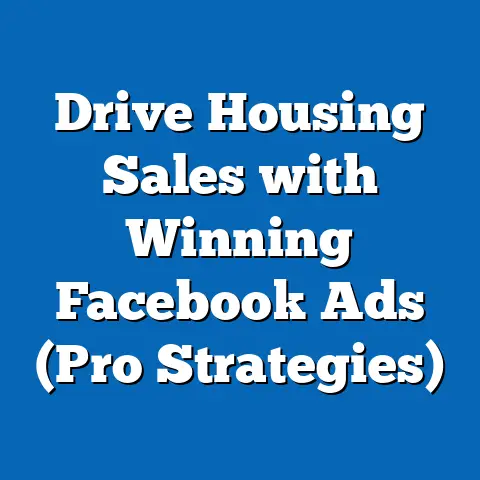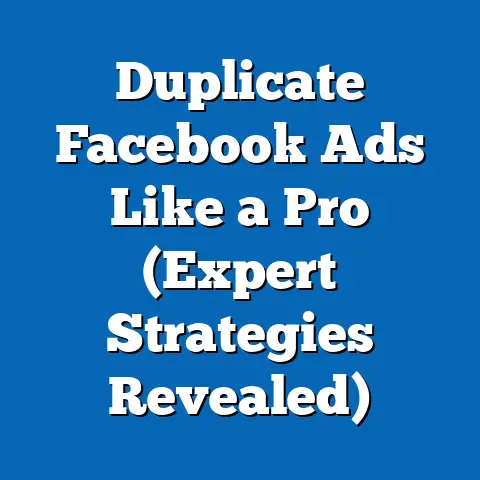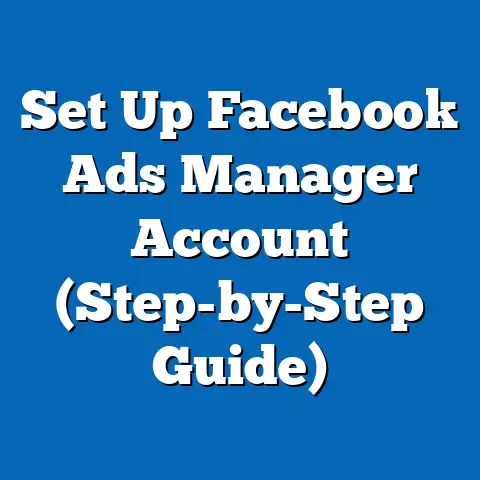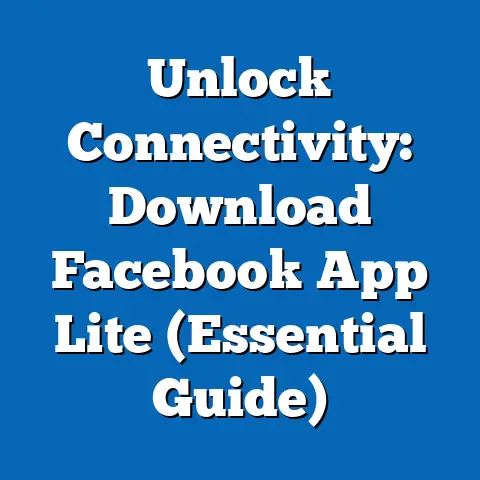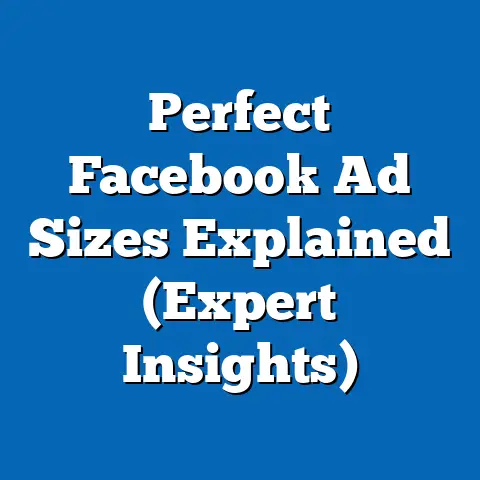Boost Ads with Expert Facebook Support (Pro Strategies)
Boost Ads with Expert Facebook Support (Pro Strategies): A Generational Perspective on Tradition and Digital Marketing Evolution
Introduction: Tradition as a Generational Anchor
Tradition, often seen as the transmission of customs, beliefs, and practices across generations, serves as a foundational element in shaping societal norms and individual identities. It acts as a bridge connecting the past to the present, influencing how communities and individuals perceive their roles in an ever-changing world. From family rituals to cultural celebrations, traditions provide a sense of continuity and belonging, particularly in times of rapid transformation.
In the context of generational studies, tradition is not merely a static relic but a dynamic force that evolves with historical events, economic shifts, and technological advancements. Each generation interacts with tradition differently—some preserve it with reverence, while others challenge or reinterpret it to fit contemporary realities. Understanding these interactions offers critical insights into how traditions influence behaviors, values, and even modern practices like digital marketing on platforms such as Facebook.
Section 1: Tradition Across Generations – Defining Characteristics
Tradition is often characterized by its role in fostering stability and identity within societies. It encompasses a wide range of practices, from religious ceremonies and national holidays to everyday customs like family dinners or storytelling. These practices are not universal but are deeply tied to specific cultural, geographic, and historical contexts.
Across generations, traditions serve as a repository of collective memory, preserving lessons and values that shape moral and ethical frameworks. For instance, older generations often emphasize the importance of face-to-face communication as a traditional value, rooted in a time when personal interactions were the primary mode of connection. Younger generations, however, may adapt these traditions by integrating digital tools, maintaining family bonds through video calls or social media.
The transmission of tradition is not without tension. While it can unify communities, it can also create generational divides when younger cohorts question outdated norms or when older generations resist change. This push-and-pull dynamic is a key characteristic of tradition, reflecting both its resilience and its adaptability in the face of societal evolution.
Section 2: Historical Context of Tradition Across Generations
To fully grasp the role of tradition, it is essential to consider the historical events and conditions that have shaped generational perspectives. For example, the Silent Generation (born roughly between 1928 and 1945) grew up during the Great Depression and World War II, periods marked by scarcity and uncertainty. These experiences ingrained values of frugality, discipline, and adherence to established norms, with traditions often centered around survival and community support.
Baby Boomers (born 1946–1964) came of age during a post-war economic boom and the Civil Rights Movement, a time of both prosperity and social upheaval. Their relationship with tradition was dualistic—many upheld conventional family and work structures, while others challenged societal norms through countercultural movements. Traditions for Boomers often revolved around milestone celebrations and the nuclear family ideal, though many redefined these through their activism and individualism.
Generation X (born 1965–1980), often described as the “latchkey” generation, experienced the rise of dual-income households and increasing divorce rates. Their historical context included the Cold War and the advent of personal computing, leading to a pragmatic and independent approach to tradition. Gen Xers often balanced respect for established customs with a desire for personal freedom, adapting family traditions to fit more flexible, individualistic lifestyles.
Millennials (born 1981–1996) and Generation Z (born 1997–2012) have grown up in the digital age, shaped by globalization, the 2008 financial crisis, and climate change concerns. For these cohorts, tradition is often viewed through a critical lens, with many prioritizing inclusivity and sustainability over rigid adherence to past practices. Digital platforms have also transformed how they engage with tradition, as seen in virtual celebrations or online communities that preserve cultural heritage in innovative ways.
Section 3: Societal Implications of Tradition Across Generations
The interplay between tradition and generational change has profound implications for society. On one hand, traditions foster social cohesion by providing shared experiences and values that bind communities together. For instance, annual holidays or cultural festivals reinforce collective identity and offer opportunities for intergenerational dialogue.
On the other hand, differing generational attitudes toward tradition can lead to conflict or misunderstanding. Older generations may perceive younger cohorts as dismissive of time-honored customs, while younger generations might view traditional practices as irrelevant or exclusionary. This tension is evident in debates over marriage customs, gender roles, and even workplace norms, where traditional expectations often clash with modern values of equality and flexibility.
Economically, traditions influence consumer behavior, a factor that ties directly into marketing strategies. Seasonal traditions, such as holiday shopping, drive significant revenue for businesses, while cultural traditions shape preferences for certain products or services. Understanding these generational nuances is crucial for marketers aiming to connect with diverse audiences, particularly in the digital realm where platforms like Facebook offer targeted advertising opportunities.
Section 4: From Tradition to Digital Transformation – The Evolution of Marketing
As technology advanced, so did marketing strategies. The rise of the internet in the late 20th century, particularly during the formative years of Generation X and Millennials, ushered in a new era of interactive and personalized advertising. Digital platforms enabled two-way communication, allowing consumers to engage directly with brands and influence marketing narratives. This shift paralleled generational changes in attitudes toward authority and tradition, with younger cohorts demanding transparency and authenticity over top-down messaging.
Today, social media platforms like Facebook have become central to modern marketing, offering tools like Boost Ads that allow businesses to amplify their reach with precision. These tools represent a departure from traditional advertising but also carry forward the core principle of connecting with audiences on a personal level. Just as past generations relied on community networks to spread word-of-mouth recommendations, today’s marketers use digital communities to build trust and loyalty—a modern reinterpretation of a timeless tradition.
Section 5: Boost Ads with Expert Facebook Support – Pro Strategies for Success
Boost Ads, a feature offered by Facebook, allow businesses to promote their posts or ads to a targeted audience for a fee, increasing visibility and engagement. When paired with expert support, these ads can become a powerful tool for navigating the complexities of digital marketing. This section explores pro strategies for leveraging Boost Ads, connecting these tactics to generational insights and the evolving nature of tradition in communication.
5.1 Understanding Generational Audiences for Targeted Campaigns
One of the most effective strategies for Boost Ads is audience segmentation, which aligns closely with generational differences in values and behaviors. For instance, Baby Boomers may respond well to ads emphasizing reliability and nostalgia, reflecting their appreciation for traditional quality and stability. Millennials, on the other hand, often prioritize social impact and authenticity, responding to campaigns that highlight ethical practices or community involvement.
Expert Facebook support can help businesses analyze demographic data and user behavior to tailor Boost Ads to specific generational cohorts. By understanding the historical and cultural contexts that shape each generation, marketers can craft messages that resonate on a deeper level. For example, a holiday campaign targeting Gen Z might focus on sustainability and digital engagement, such as virtual gift exchanges, while a similar campaign for Boomers could emphasize family traditions and in-person gatherings.
5.2 Leveraging Visual and Interactive Content
The shift from traditional to digital marketing mirrors generational preferences for dynamic, interactive content over static messaging. Younger generations, particularly Millennials and Gen Z, are accustomed to visually rich and engaging formats like videos, stories, and polls—content types that perform exceptionally well with Boost Ads. Expert support can guide businesses in creating compelling visuals that align with platform algorithms, ensuring higher reach and interaction rates.
For older generations, incorporating elements of familiarity—such as classic design motifs or references to shared cultural milestones—can enhance the effectiveness of boosted content. This approach respects the traditions of communication that resonate with these audiences while adapting to the digital medium. A skilled Facebook strategist can balance these elements, creating campaigns that appeal across generational lines without alienating any group.
5.3 Timing and Cultural Sensitivity
Traditions often revolve around specific times or events, a factor that marketers can leverage through Boost Ads. For example, boosting posts during major holidays or cultural celebrations can capitalize on heightened consumer activity, but it requires an understanding of generational and cultural nuances. Expert support ensures that campaigns are timed appropriately and are sensitive to diverse traditions, avoiding missteps that could damage brand reputation.
Data from Facebook Insights, combined with expert analysis, can reveal peak engagement times for different demographics. Gen Z may be more active late at night, while Boomers might engage more during early evening hours. Aligning Boost Ads with these patterns, while tying content to relevant traditions, maximizes impact and fosters a sense of connection with the audience.
5.4 Budget Optimization and Performance Tracking
One of the advantages of Boost Ads is the ability to control budgets and measure outcomes in real time, a departure from the less measurable results of traditional advertising. Expert Facebook support can assist in setting realistic budgets that align with business goals, ensuring that ad spend targets the most responsive generational segments. For instance, a small business might allocate more budget to reaching Millennials during a product launch, given their influence as early adopters.
Performance tracking is another area where expert guidance proves invaluable. By analyzing metrics such as click-through rates, engagement levels, and conversion data, marketers can refine their strategies continuously. This data-driven approach reflects a modern adaptation of the traditional marketing goal of understanding customer needs, blending analytical precision with the timeless value of customer connection.
Section 6: Societal and Workplace Implications of Digital Marketing Strategies
The integration of Boost Ads and expert Facebook support into marketing strategies has broader implications beyond commercial success. Socially, it reflects how generations adapt traditional communication methods to digital platforms, maintaining the essence of connection while embracing innovation. This evolution fosters inclusivity by allowing diverse voices—across age, culture, and geography—to engage with brands in meaningful ways.
In the workplace, digital marketing tools have reshaped roles and expectations. Younger employees, often more tech-savvy, bring fresh perspectives to advertising strategies, while older workers contribute insights rooted in traditional business practices. Companies that invest in expert Facebook support can bridge these generational gaps by providing training and fostering collaboration, ensuring that marketing teams leverage both experience and innovation.
Economically, the accessibility of Boost Ads democratizes marketing for small businesses, allowing them to compete with larger corporations in ways that traditional advertising rarely permitted. This shift aligns with generational trends toward entrepreneurship and self-expression, particularly among Millennials and Gen Z, who value autonomy and creativity in their professional endeavors.
Section 7: Challenges and Nuances in Generational Marketing
While Boost Ads and expert support offer significant opportunities, they are not without challenges. One key issue is avoiding generational stereotypes, as not all members of a cohort share the same values or behaviors. For instance, assuming all Boomers are resistant to technology overlooks the growing number who actively engage on social media.
Cultural and regional differences further complicate generational marketing. A tradition that resonates with one demographic in a specific country may have little relevance elsewhere. Expert Facebook support must account for these nuances, using localized data and cultural insights to refine Boost Ad campaigns.
Additionally, the rapid pace of technological change can create disparities in digital literacy across generations. While younger cohorts may adapt quickly to new features on platforms like Facebook, older users may require more intuitive or simplified interfaces. Marketers must address these disparities to ensure that boosted content is accessible to all target audiences.
Section 8: Forward-Looking Insights and Uncertainties
Looking ahead, the intersection of tradition and digital marketing will continue to evolve as new generations emerge and technology advances. The upcoming Generation Alpha (born after 2012) is growing up in an era of artificial intelligence and augmented reality, which will likely shape their expectations for personalized and immersive advertising. Boost Ads and similar tools will need to adapt to these preferences, potentially integrating more interactive and AI-driven features.
At the same time, the enduring value of tradition suggests that storytelling, community, and trust will remain central to effective marketing. Expert Facebook support can help businesses navigate this balance, ensuring that digital strategies honor timeless principles while embracing innovation. However, uncertainties remain, including potential shifts in social media regulations, privacy concerns, and platform algorithms that could impact the effectiveness of Boost Ads.
Economically, the growing emphasis on sustainability and ethical practices—driven largely by younger generations—may influence how businesses approach digital marketing. Campaigns that align with these values, supported by expert strategies, are likely to gain traction in the future. Yet, predicting the exact trajectory of these trends is challenging, underscoring the need for adaptability and continuous learning.
Conclusion: Bridging Tradition and Innovation Through Generational Insights
Tradition, as explored through generational lenses, reveals a complex interplay of continuity and change that shapes societal norms and individual behaviors. From the Silent Generation’s adherence to established customs to Gen Z’s reimagining of cultural practices through digital means, each cohort contributes to the evolving narrative of tradition. This dynamic informs not only personal and cultural identities but also commercial practices, as seen in the transition from traditional advertising to modern digital strategies.
Boost Ads with expert Facebook support exemplify how businesses can bridge the gap between past and present, leveraging generational insights to craft campaigns that resonate across diverse audiences. By understanding the historical contexts, societal implications, and nuanced characteristics of each generation, marketers can create targeted, meaningful content that honors tradition while embracing innovation. As society moves forward, the challenge lies in maintaining this balance, ensuring that digital tools like Boost Ads remain adaptable to emerging trends and generational shifts while staying grounded in the timeless value of human connection.

